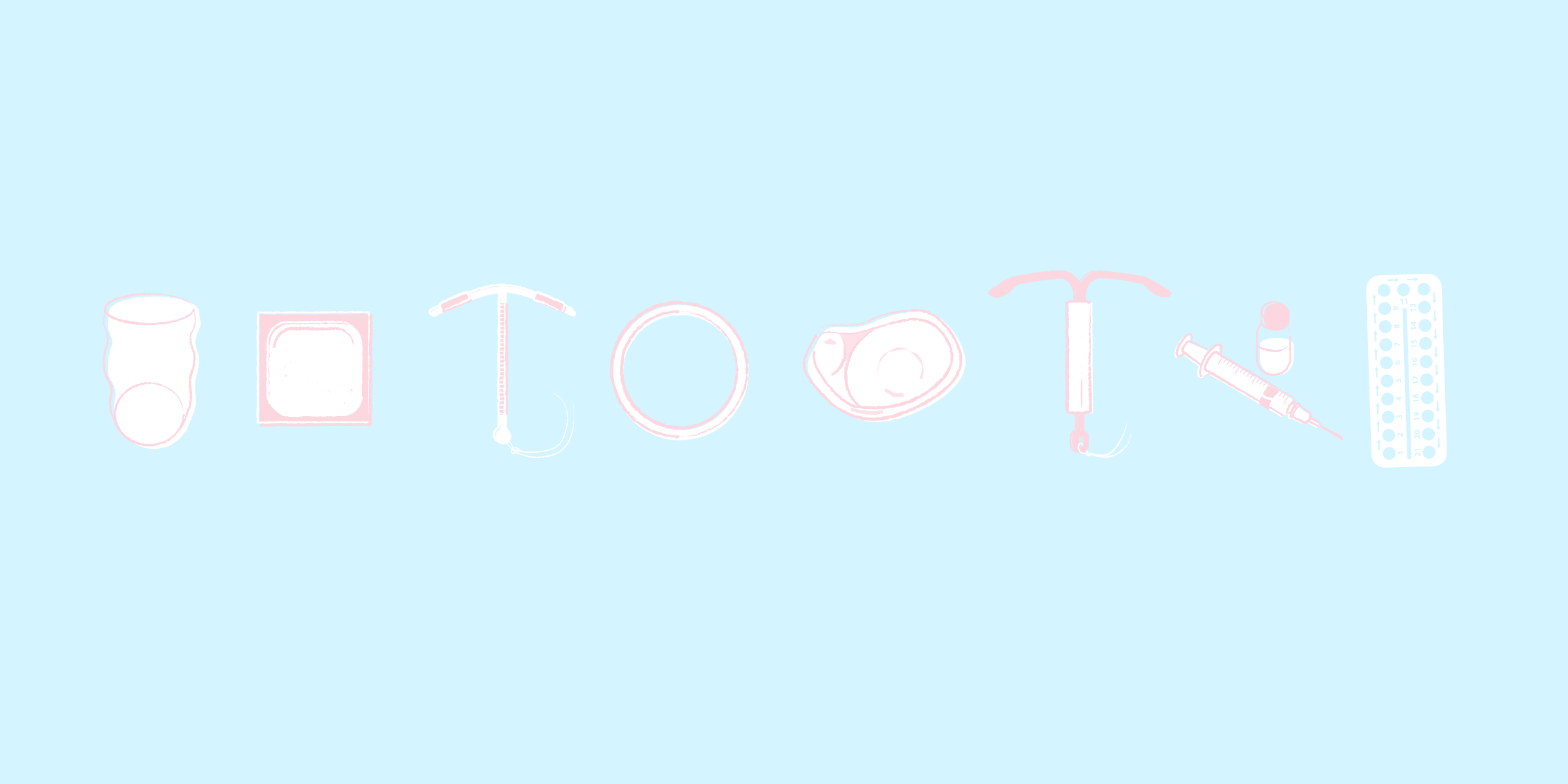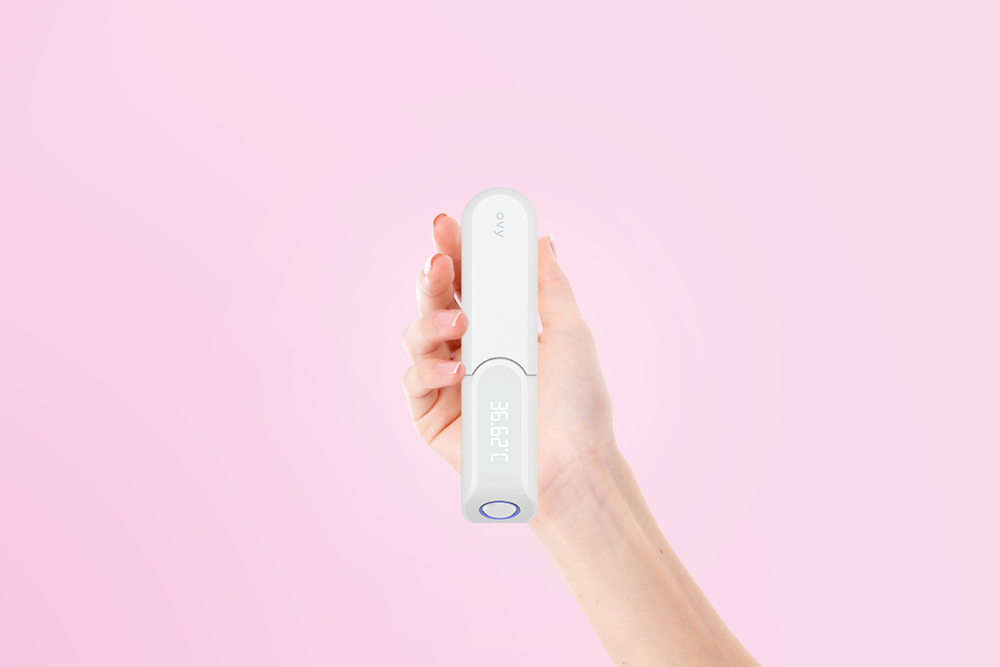Key Takeaways
- Der ideale Zeitpunkt, um bei Kinderwunsch ungeschützten Geschlechtsverkehr zu haben, ist der Tag vor dem Eisprung.
- Dieser lässt sich mit Hilfe von Ovulationstests feststellen oder durch die Beobachtung einiger Körpersignale.
- Werden diese nach den Regeln der symptothermalen Methode ausgewertet, weißt du, wann dein fruchtbarer Zeitraum ist.
The female egg cell is only fertile for about twelve hours per cycle. Sperm, however, can remain fertile in the woman’s body for up to five days. This means that the fertile window each cycle is reduced to six days. At this point, family planning can become a challenge, because if both partners are frequently traveling, the right time window might not be successfully met. Women* who know when they are fertile can plan for children more effectively. The symptothermal method increases the chances of becoming pregnant.
Recognizing the Fertile Days – A Key on the Way to Your Own Baby
On the path to a natural pregnancy, it is important to know when a woman*’s fertile days are. With the symptothermal method, this can be tracked. The main indicators are cervical mucus and basal body temperature. Several days before ovulation, the consistency of cervical mucus begins to change. Shortly before ovulation, more mucus is produced that is clear and stretchable between the fingers. Toward the end of the cycle, the mucus becomes thicker and whiter again. On the day of ovulation, the measured waking temperature, also known as the basal body temperature, is particularly low. Shortly after ovulation, it rises slightly.
With these two factors, basal temperature and cervical mucus, the fertile days can be calculated. For even more precise identification of fertile days, ovulation tests can help. These measure the concentration of luteinizing hormone in the urine and indicate when ovulation is taking place – and thus when the fertile days occur. A woman* has approximately six fertile days per cycle. In the Ovy app, these days are marked in green (in the “Trying to Conceive” mode) and are easy to identify.
How Do I Know If I Am Pregnant?
One of the first signs is the absence of menstruation. In addition, regular lower abdominal and stomach cramps may occur. Due to hormonal changes, mood swings and circulatory problems can also appear. Pregnant women often feel tension in their breasts, have frequent urination, are tired and exhausted. Morning sickness is also common. During pregnancy, changes in smell and taste perception may also occur. Some pregnant women develop unusual cravings, while others develop aversions to certain foods. A sustained rise in basal temperature can also be a sign of pregnancy. If you are unsure, you can take a pregnancy test or consult your gynecologist.
When Is the Optimal Time to Get Pregnant?
In Germany, women* have their first child on average at the age of 29. Biological age plays an important role in female fertility. Between the ages of 20 and 24, women* are at their most fertile. The older they get, the lower the likelihood of pregnancy, while the probability of infertility rises at the same time. At 35, the female body is only about half as fertile as at 25. From the age of 40, the risks of pregnancy increase significantly, including complications such as high blood pressure and gestational diabetes. About one in three pregnancies at this age ends in miscarriage.
When Is Pregnancy Age-Critical?
The older a woman* gets, the fewer viable egg cells remain. As menopause approaches, cycles become more irregular, and menstruation occurs less frequently. Menopause is the phase in which a woman*’s reproductive capacity ceases. The chances of becoming pregnant during menopause are therefore very low. If menstrual bleeding has been absent for a year or longer, a woman* can safely assume that she can no longer become pregnant.
How Long Can It Take to Get Pregnant?
On average, it takes three to six cycles for a woman* with regular sex to become pregnant. Regular sex means having intercourse every two to three days to increase the chances of conception.
One third of women* wait longer than one year before pregnancy occurs. Women* over the age of 35 who wish to conceive are advised to consult a doctor after six months of unsuccessful attempts to check their reproductive health. For women* under 35, this step is recommended after one year.
Why Am I Not Getting Pregnant?
Getting pregnant is not as easy as many think. After years of strict contraception, it is often assumed that without it, pregnancy will happen very quickly. In reality, there are a number of factors that can make conception difficult:
Thyroid
Whether overactive or underactive, the thyroid is often an overlooked factor that reduces fertility. According to Prof. Dr. Hans Udo Zieren of the Thyroid Center Cologne, about ten percent of involuntarily childless women* are affected by a thyroid disorder. However, this can be easily treated through targeted thyroid hormone supplementation. A general practitioner can check thyroid levels and prescribe medication if necessary.
Nutrition
Poor nutrition can also affect the chances of pregnancy. A high-fiber diet rich in antioxidants is beneficial. It is also recommended to consume sufficient zinc, vitamin B, and vitamin D, as these nutrients support the production of important hormones. Cooked meals and dishes that include all five flavors can also promote conception. Whenever possible, meals should be prepared with mostly unprocessed, seasonal foods for better nutrient content. Alcohol consumption and smoking by either partner can stand in the way of pregnancy.
Stress
Women* with high levels of alpha-amylase (a stress hormone) have almost 50 percent lower chances of becoming pregnant compared to women* with low stress levels. Targeted stress reduction and relaxation exercises can therefore improve the chances of conception.
Overweight and Underweight
Severe overweight or underweight can also be the cause of unfulfilled desire for children. Both conditions can lead to the absence of ovulation. In men, overweight can cause overproduction of estrogens and thus lead to low testosterone levels, which in turn may reduce sperm quality and sperm production.
Physical Strain
In addition to nutrition, exercise is immensely important when trying to conceive. Sports and physical activity benefit overall health, support the immune system, and strengthen muscles. But here too, balance is key. Excessive training can drain the body of the energy it needs for pregnancy. Women* who exercise almost daily to the point of exhaustion are more prone to reduced fertility.
Medically Reviewed
This text was created by medical editors on the basis of specialist medical literature and current studies. Our aim is to work scientifically, identify sources and regularly check that the content is up to date.
References & Literature
- Mihm, M., Gangooly, S., & Muttukrishna, S. (2011). The normal menstrual cycle in women. Animal reproduction science, 124(3-4), 229-236.
- Baker FC, Siboza F, Fuller A. Temperature regulation in women: Effects of the menstrual cycle. Temperature (Austin). 2020;7(3):226-62.
- Reed BG, Carr BR. The Normal Menstrual Cycle and the Control of Ovulation. In: Feingold KR, Anawalt B, Boyce A, Chrousos G, de Herder WW, Dhatariya K, et al., editors. Endotext. South Dartmouth (MA): MDText.com, Inc. Copyright © 2000-2022, MDText.com, Inc.; 2000.
You might also be interested in these articles
Kinderwunsch
Reproduktionsmediziner Dr. Löbbecke beantwortet die wichtigsten Fragen zur Fruchtbarkeit6 Min. Lesezeit





